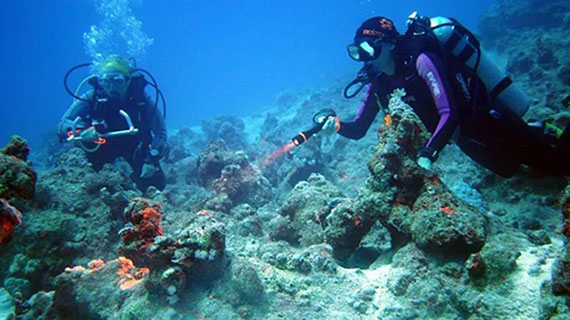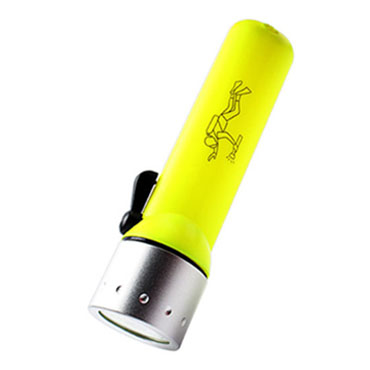Diving flashlight is a kind of underwater light. The earliest diving flashlights were only used as divers' lighting. At now, people become more interested in the sea, the desire to explore the mysterious sea has increased, and diving sports have gradually developed from individual regions to all coastal cities in the world. The exploration of underwater ancient cultural relics, National oceanic geographical exploration, the latest trend of underwater wedding photography, are widely used in the seabed. Due to the dim light on the seabed, people expect to be able to see everything clearly on the bottom of the sea, more and more people began to use diving flashlights, the demand for this is higher and higher.

Features:
The integrated aluminum alloy material, stainless steel lamp holder, and permanent maintenance-free design of the magnetic control switch are designed to be sealed up to 200 meters for deep diving operations and 2 meters high for anti-vibration, riot and other environmental performance. Low resistance, high flexibility and excellent waterproof.
The underwater flashlight adopts strong aluminum alloy lamp cap, which effectively prevents water.
How to choose diving flashlight?
Waterproof. Waterproofing is the first guarantee of diving flashlights. It mainly involves the air-tightness of the body and the switch structure. Many diving flashlights basically use ordinary silicone rubber ring, which can maintain waterproof in a short time. However, due to the poor elastic repair ability of silicone rubber ring, it is easy to be affected by high or low temperature, and has poor resistance to acid and alkali corrosion. If you not replaced in time, it will lose sealing effect and cause water seepage.
Brightness. Lumen is a physical unit describing luminous flux, and measuring the brightness of a flashlight is no exception. Generally speaking, for common entry-level diving, 700-1000 lumens torches can satisfy the basic needs. If it is night diving, deep diving, cave diving, you need to have a higher brightness, 2000-5000 lumens. More experienced fans like 5000-10000 lumens, that is high-end demand, very bright, can meet any purpose. In addition, for the same lumens, the purpose of condensing and astigmatism is completely different. Condensing is mostly used for long-range lighting, while astigmatism is only close-range, wide-range lighting, and is mainly used for photography.
Battery life. For night diving, the lights must be turned on before entering the water, and the battery life within 1 hour is not enough. You should pay attention to the battery life of the flashlight when purchasing. Our products can run for four hours with batteries, and you can rest assured to use.
Color. If you have no obvious preference for the color of the flashlight and the water quality is good, you can choose a white flashlight between 5500k-6000k. Because the color temperature of the flashlight in this range is close to the sun at 12 noon, the angle of refraction to underwater objects and the color reproduction of creatures are very effective. If you are in poor water quality, then a small yellow light diving flashlight is more suitable, because the penetration power of the yellow light flashlight under water will be better.
Notes:
LED diving flashlights need to be checked regularly. During use, LED diving flashlight may have loose components, aging of the waterproof ring. Doing a comprehensive inspection before use and find the problem in time. It can avoid loss and trouble.
To avoid instantaneous high current discharge as much as possible. High-current discharge easily produces lead sulfate crystals, which damages the physical properties of the battery plates.
To grasp the charging time. Regardless of whether it is a lithium battery or a nickel-metal hydride battery, prevent overcharging when charging. Once charging is complete, unplug the charger in time. Overcharging will cause the battery to deform or even explode.
To avoid prolonged exposure to the sun. An environment with too high temperature will increase the internal pressure of the battery and the battery pressure limiting valve will be forced to open automatically. The direct consequence is to increase the battery's water loss. The excessive loss of water in the battery will inevitably lead to a decrease in battery activity, accelerate the softening of the electrode plate, and cause fatal damage such as heat, bulging, and deformation of shell during charging.

